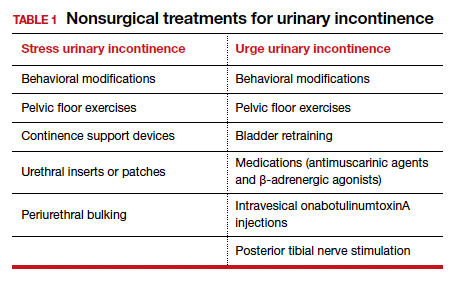
September 1, 2024
Exploring The Mental Influence Of Urinary System Incontinence
The Psychological Toll Of Urinary System Incontinence In Men And Clinical Remedies * It can be demanding going to function when you have urinary incontinence, particularly if you fret a lot regarding it while you are there. Having a strategy and considering coping techniques ahead of time can help minimize the inconvenience and fear of urinary incontinence, and aid you feel more in control of the scenario. There are several things you can do, and products you can utilize, to make urinary system incontinence less of a worry to live with in your life generally, in addition to at the workplace.- A simple example is that of a yard hose pipe (urethra) running over a sidewalk surface area (former endopelvic connective cells).
- Extended contact of urine with the vulnerable skin triggers get in touch with dermatitis and skin failure.
- People with OAB may fret about having signs, especially in social situations, and this can set off their fight-or-flight reaction.
White Issue Microstructural Modifications Are Connected With Alcohol Use In Patients With Panic Disorder
What are the methods for urinary incontinence?
Table 2
An age-related pattern also appears in the predominant type of urinary system incontinence experienced. As a whole, researches have shown that tension urinary incontinence often tends to be more common in ladies more youthful than 65 years, while desire urinary system incontinence and blended urinary system incontinence is more usual in ladies older than 65 years. Although our research study has numerous strengths, including its use a population-based sample, cautious measures of incontinence severity, and detailed assessment of incontinence administration methods, several constraints ought to be kept in mind. Initially, data on assessment and therapy patterns were accumulated by self-report; we did not attempt to obtain connection of actions by checking out drug store databases or medical professional documents. Ultimately, our research did not try to differentiate in between various ethnic subgroups within race (eg, East Eastern, Southeast Asian, Indian Subcontinent, Central American, South American, or Mexican). Additional study is required to determine if these patterns in influence or treatment differ by ethnic subgroup.Other Treatments For Impulse Urinary Incontinence
In either situation, urethral sphincter function suffers, causing urine loss at less than normal stomach pressures. This research study discloses numerous crucial fads in the quality-of-life effect and therapy of urinary incontinence in ethnically diverse women in the United States. In this populace of ladies with at the very least weekly continuous urinary incontinence, quality-of-life influence varied significantly depending on factors related to the timing and setup of signs. A person that undertakes surgical therapy of tension incontinence is more probable to experience symptomatic prolapse in the future. Current massive research studies have disclosed that approximately one third of the adult, community-dwelling females have some kind of urinary system incontinence (UI). Stress and anxiety urinary signs and symptoms are most common, being apparent in 70%-- 88% of incontinent females, either as pure tension urinary incontinence (SUI) or blended urinary system incontinence (MUI). SUI continues to remain a taboo, though, with only a minority of incontinent women speaking with a physician concerning their problem. Reasons for these low appointment rates consist of shame and humiliation, lack of details regarding available therapy alternatives, are afraid for surgical treatment and the misunderstanding that coming to be incontinent is Click here for more info an inevitable consequence of age and/or delivering. Yet, most SUI clients indicate that the condition has an unfavorable effect on their wellness. 

Social Links